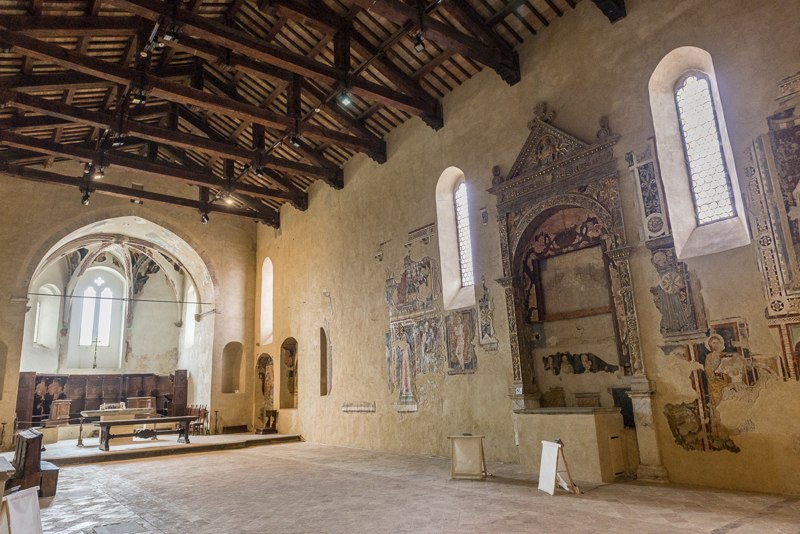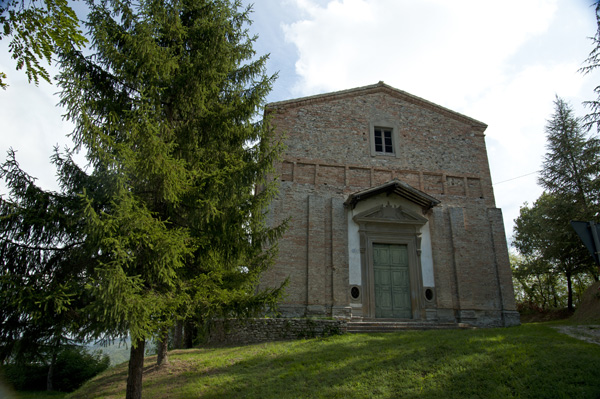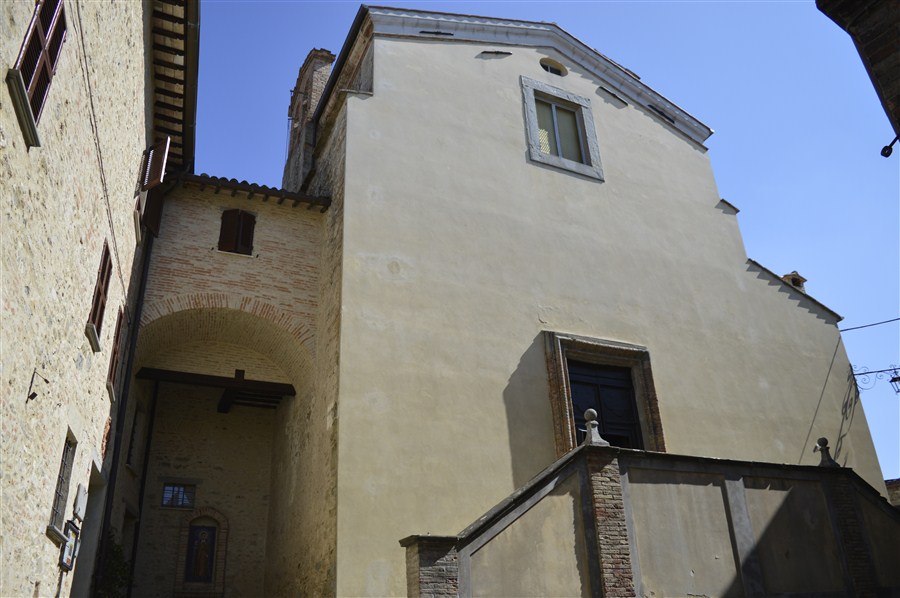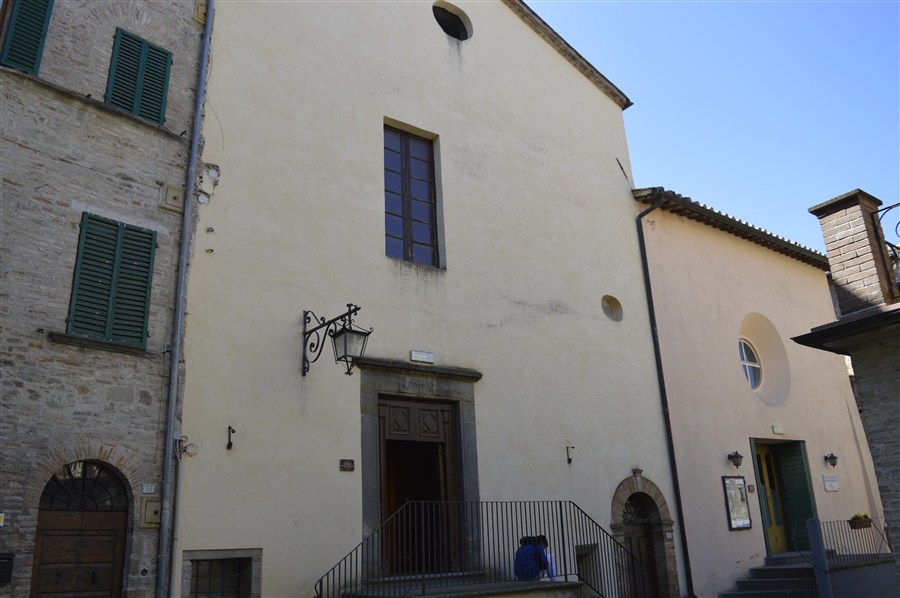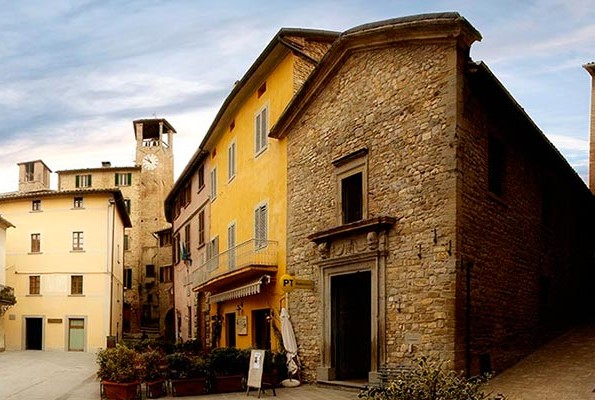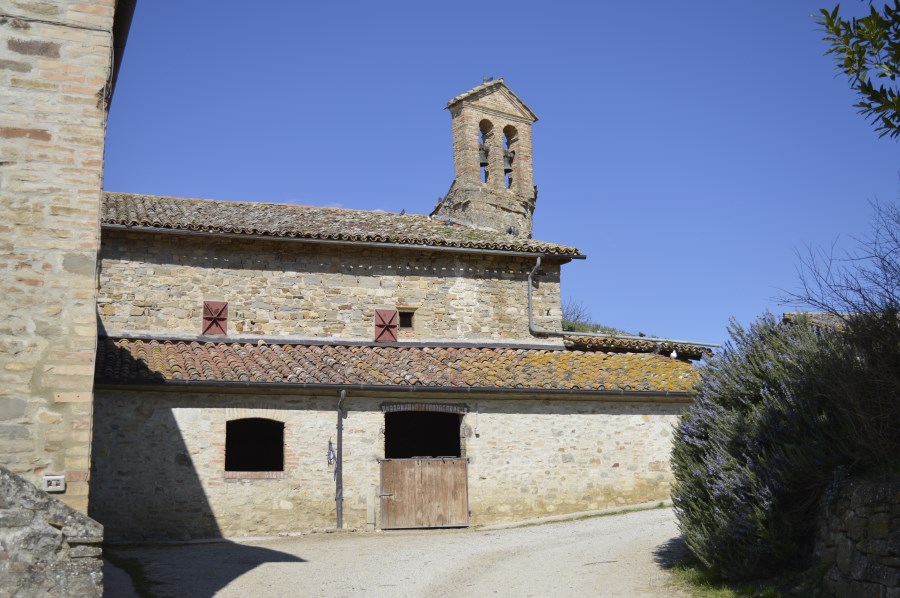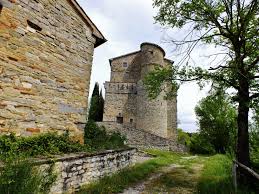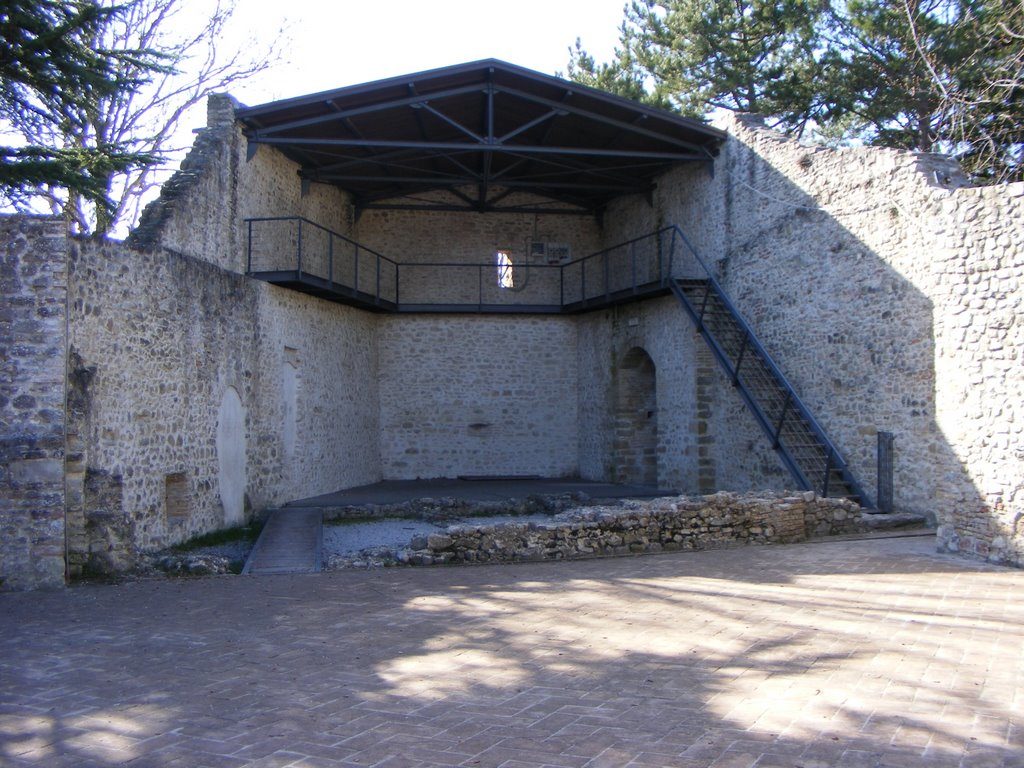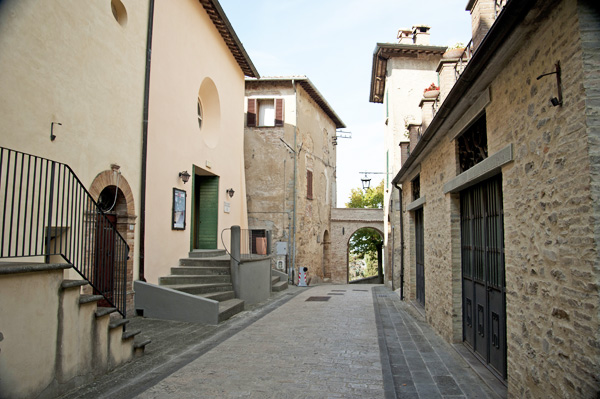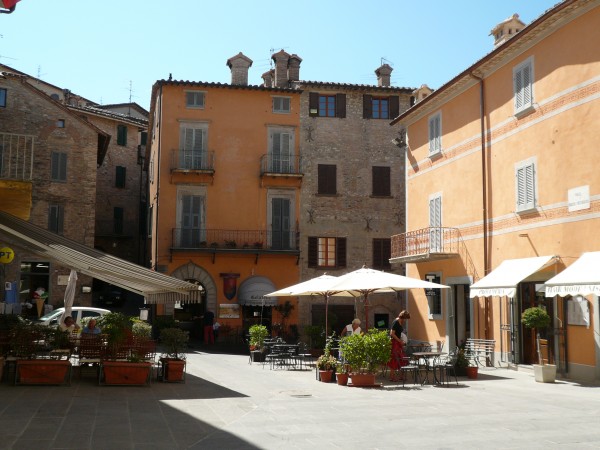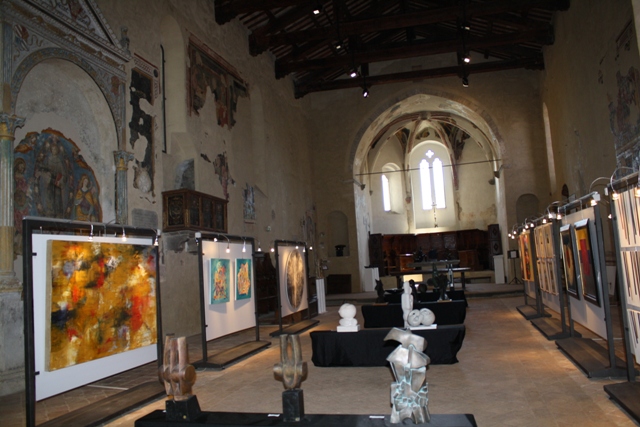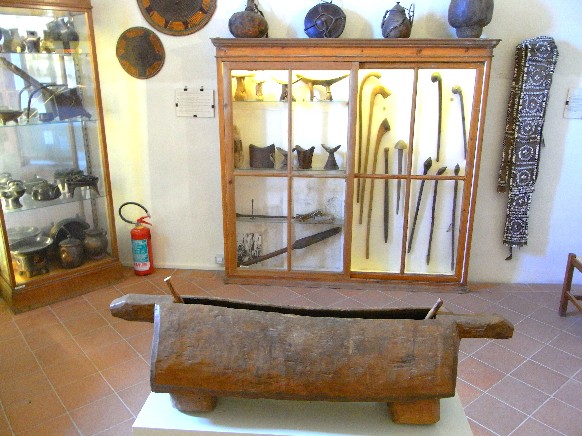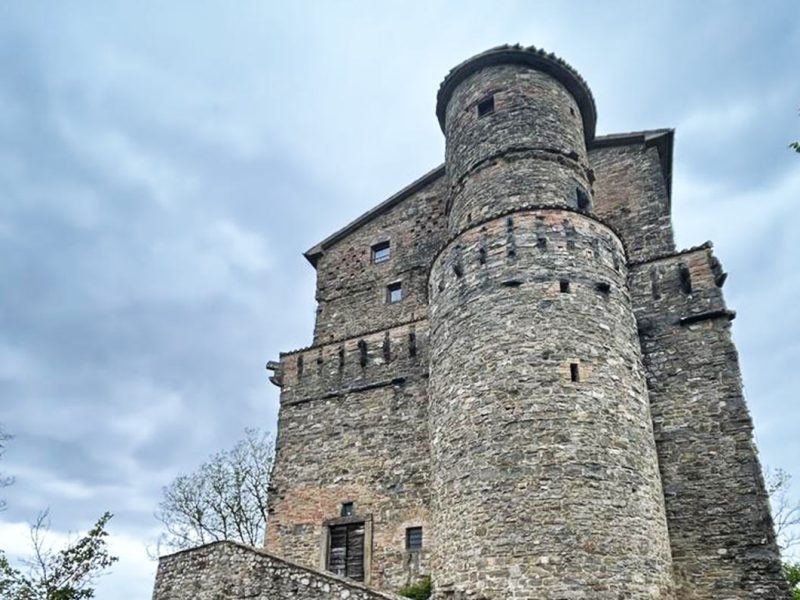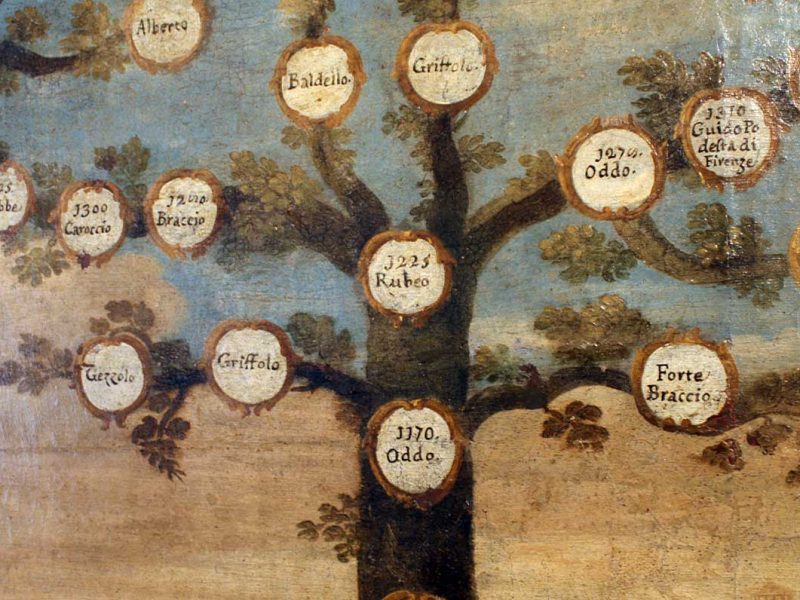Montone
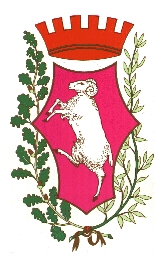
PROVINCE:
Perugia
WEB:
For further information:
Pro Loco:
Via S. Francesco, 1
Tel: 3474988870
Montone
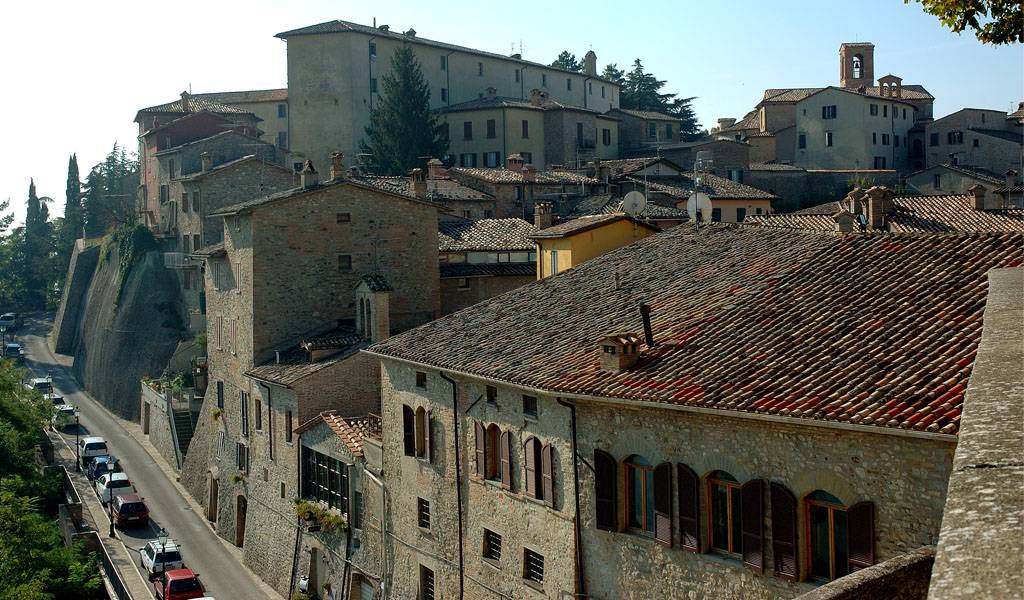
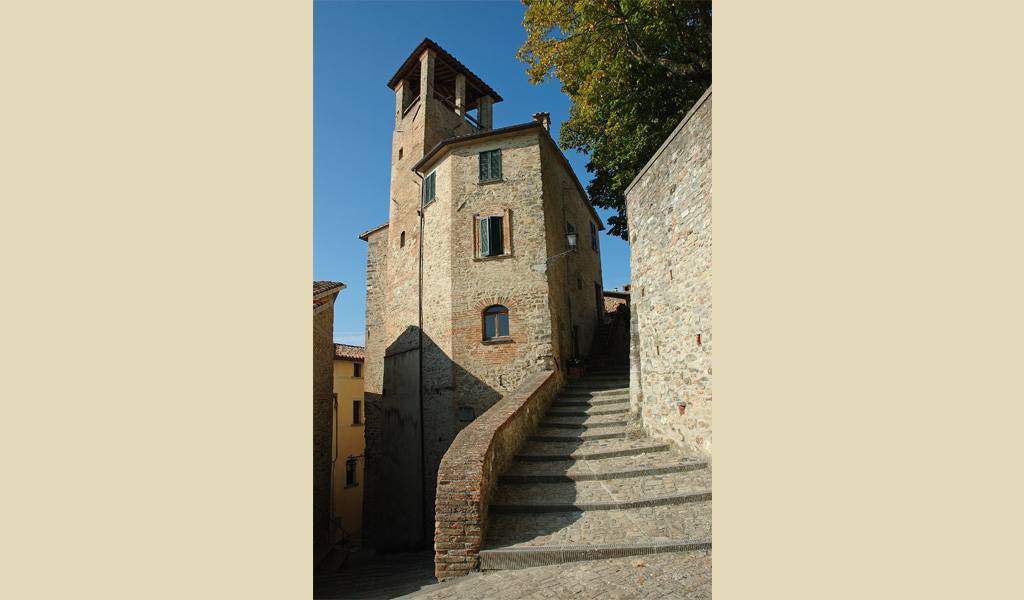
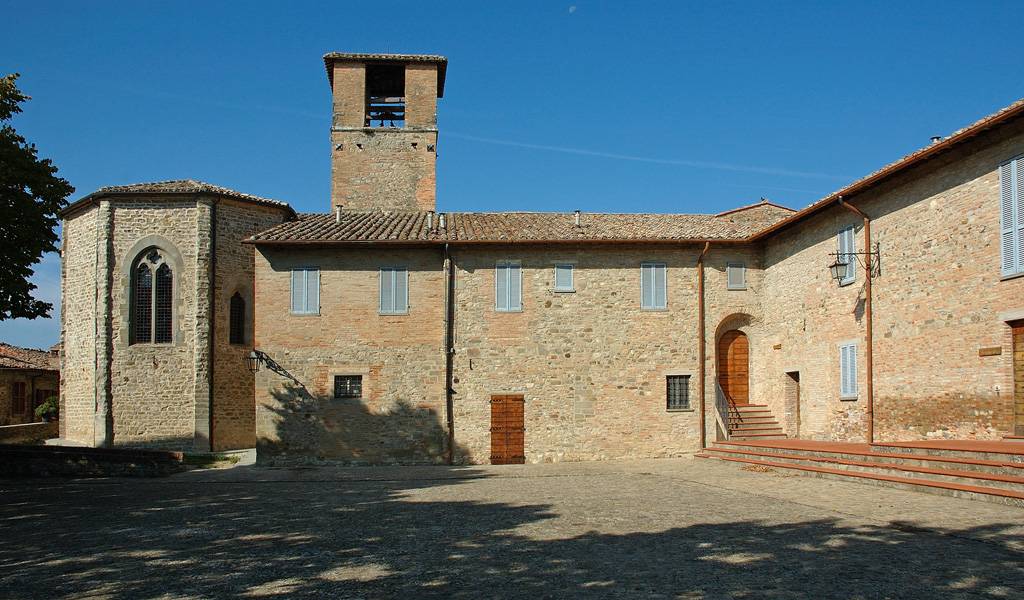
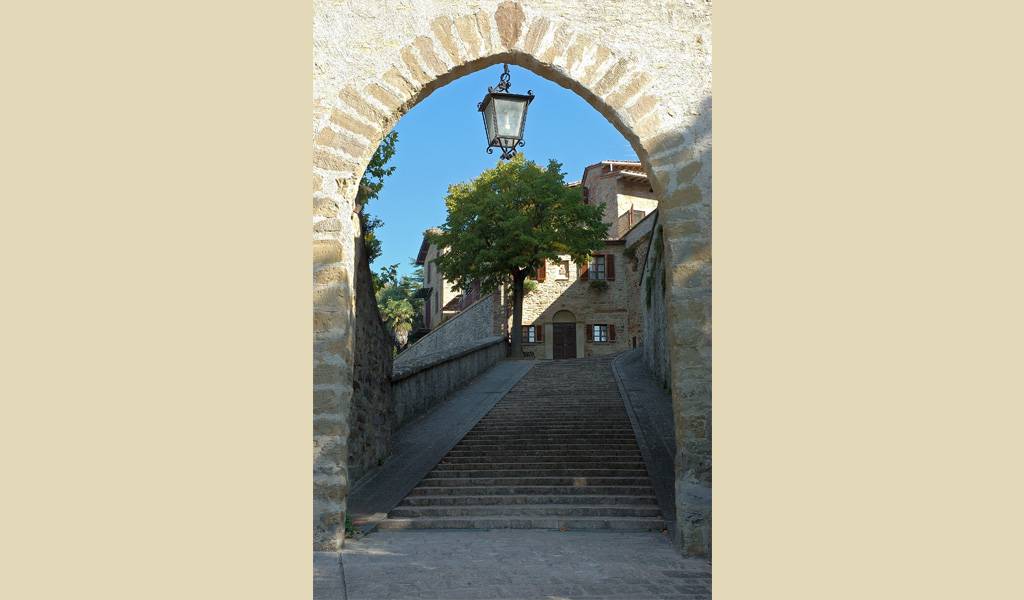
Montone is REGISTERED TO:
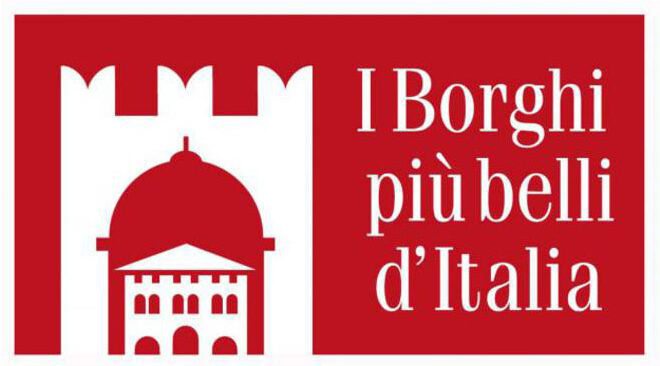
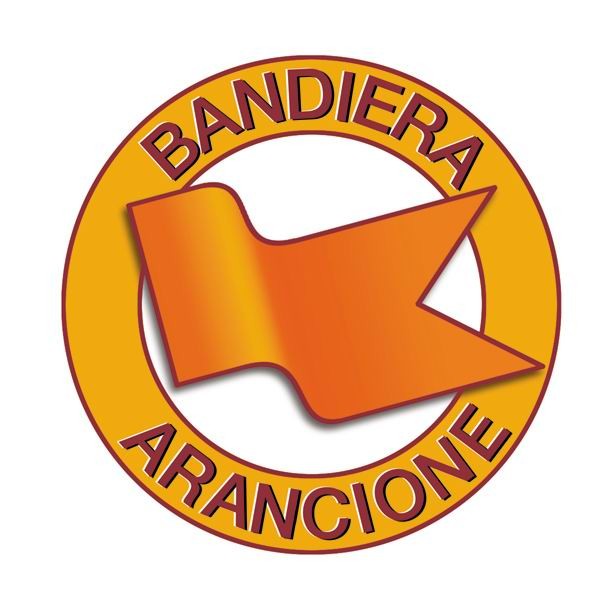
discovering the village
«It was the year 800 and on the hills that divide Città di Castello from Umbertide lived the so-called Arienati peoples who, according to what was reported by the historian Lucantonio Canizi in a work he wrote in 1626, at that time lived in the Upper Tiber Valley, divided into six castles.»
With these words the history of Montone begins in an old article; while Mario Tabarrini writes that «the primitive Montone would then be destroyed by the Goths and only around 1000 it was rebuilt». Certainly the first document that mentions Montone, defining it as a castrum with a castaldo – divided into two villages and with a parish church already equipped with landed possessions located between the estates of the marquises of Colle (then of Monte S. Maria) and the Benedictine monastery of Camporeggiano – dates back to 1121.
In January of the year 1200 the two brothers, Fortebraccio and Oddone, sons of Leonardo, asked Perugia for citizenship, ceding all their possessions to the municipality and being included in the city nobility with a residence in the district of Porta S. Angelo. Montone was also assigned to the county of Porta S. Angelo and the consuls of the city, signing the act, triggered the uprising, supported by Città di Castello, of the party led by the Olivi family, opposed to the Fortebracci. The defeat of the Tifernati that followed, forced the Montonesi, like all the other conquered castles, to bring the palio to Sant’Ercolano. The submission was reaffirmed in 1216 “with the promise to always experience the same fortune as the people of Perugia in war and in peace”.
From this moment and for two centuries to follow, Montone remained tied to Perugia, although always contested by Città di Castello, until in 1250 it too ended up submitting to Perugia.
1368 was an important year for Montone, in fact on July 1st Andrea Braccio da Montone, the greatest Umbrian mercenary leader, was born (some historians say in Montone, others in Perugia). In 1392 we find him siding with the nobles of Perugia fighting against the Raspanti, who however prevailed and sent all the defeated opponents into exile; including Braccio, who took refuge in Montone. From here in 1394 he attempted to occupy Fratta (today’s Umbertide) to prevent it from falling into the hands of the Raspanti of Perugia, but an ambush took him prisoner. Biordo Michelotti, who was the head of the Raspanti family from Perugia, intervenes to free him, but demands that Montone be ceded to him, therefore «the Fratta adventure cost Braccio its honor and the family its fiefdom». Later Braccio leaves Montone and goes into the service of Florence. Upon the death of Biordo Michelotti, the exiles try to return to Perugia so Braccio, allied with Bartolomeo degli Oddi known as the Miccia, together with a small group of men tries to take over Perugia, but in order to defend itself, it submits to the Duke of Milan. Braccio then goes into the service of Alberico da Barbiano who is at war with the Bolognese and then of Ladislaus, king of Naples. On 28 August 1414, the antipope John XXIII grants Braccio and his descendants perpetual lordship of Montone. In 1416 Braccio attacked Perugia and obtained a crushing victory over his enemies at Sant’Egidio, after a bloody battle, so on 19 July he could triumphantly enter Perugia where he was acclaimed lord. The conquests of Todi, Terni, Narni and Orvieto followed, as well as Montefeltro and Urbino. Braccio Fortebracci died from wounds sustained in battle at L’Aquila in 1424. With his death the Pope regained possession of the territories conquered by Braccio and Montone in 1478 became an integral part of the Papal States: its walls were destroyed as well as the home of the Fortebracci family «which was one of the most beautiful and magnificent in Italy». «On the death of the great Braccio […] the town ceased to be one of the main protagonists in the history of medieval Italy and its name recurred with ever less frequency in the chronicles of the time». But the history of Montone continues and from 1518 to 1640 we witness the presence in the county (elevated to marquisate in 1607) of the Tifernate Vitelli family to whom Pope Leo X had given it as compensation for their help in conquering the Duchy of Urbino. The last marquis was Chiappino Vitelli, upon whose death Montone passed to the direct government of the Church. After Napoleon it remained a free municipality and with the Kingdom of Italy it became part of the district of Umbertide.
In January of the year 1200 the two brothers, Fortebraccio and Oddone, sons of Leonardo, asked Perugia for citizenship, ceding all their possessions to the municipality and being included in the city nobility with a residence in the Porta S. Angelo district. Montone was also assigned to the county of Porta S. Angelo and the city’s consuls, by signing the act, triggered the uprising, supported by Città di Castello, of the party led by the Olivi family, opposed to the Fortebracci.
The resulting defeat of the Tifernati forces the Montonesi, like all the other conquered castles, to bring the Palio to Sant’Ercolano. The submission is reaffirmed in 1216 “with the promise to always run the same fortune as the Perugian people in war and in peace”.
From this moment and for two centuries to follow, Montone remains tied to Perugia, although always contested by Città di Castello, until in 1250 it too ends up submitting to Perugia.
1368 is an important year for Montone, in fact on July 1st Andrea Braccio da Montone, the greatest Umbrian mercenary leader, was born (some historians say in Montone, others in Perugia). In 1392 we find him aligned with the Perugian nobles fighting against the Raspanti, who however prevail and send all the defeated opponents into exile; including Braccio, who takes refuge in Montone. From here in 1394 he tries to occupy Fratta (today’s Umbertide) to prevent it from falling into the hands of the Raspanti of Perugia, but an ambush takes him prisoner. Biordo Michelotti, who was the head of the Raspanti of Perugia, intervenes to free him, but demands that Montone be ceded to him, therefore “the adventure of Fratta cost Braccio its honor and the family its fiefdom”. Later Braccio leaves Montone and goes into the service of Florence. Upon the death of Biordo Michelotti, the exiles try to return to Perugia so Braccio, allied with Bartolomeo degli Oddi known as the Miccia, together with a small group of men tries to take over Perugia, but in order to defend itself, it submits to the Duke of Milan. Braccio then goes into the service of Alberico da Barbiano who is at war with the Bolognese and then of Ladislao, king of Naples. On August 28, 1414, the antipope John XXIII granted Braccio and his descendants perpetual lordship of Montone. In 1416 Braccio attacked Perugia and obtained, after a bloody battle, a crushing victory over his enemies at Sant’Egidio, so on July 19 he could triumphantly enter Perugia where he was acclaimed lord. The conquests of Todi, Terni, Narni and Orvieto followed, as well as Montefeltro and Urbino. Braccio Fortebracci died from wounds sustained in battle at L’Aquila in 1424. With his death, the Pope regained possession of the territories conquered by Braccio and in 1478 Montone became an integral part of the Papal States: its walls were destroyed, as was the home of the Fortebracci family, “which was one of the most beautiful and magnificent in Italy.” «At the death of the great Braccio […] the town ceased to be one of the main protagonists in the history of medieval Italy and its name appears with ever less frequency in the chronicles of the time». But the history of Montone continues and from 1518 to 1640 we witness the presence in the county (elevated to marquisate in 1607) of the Tifernate Vitelli family to whom Pope Leo X had given it as compensation for their help in conquering the Duchy of Urbino. The last marquis was Chiappino Vitelli, upon whose death Montone passed to the direct government of the Church. After Napoleon it remained a free municipality and with the Kingdom of Italy it became part of the district of Umbertide.
The construction of the Church of San Francesco dates back to the first decade of the fourteenth century, but recent archival research carried out by Maria Rita Silvestrelli has produced new results for the reconstruction of the history of the Franciscan settlement, documenting it as early as 1268. It stands within the city walls, on the site called Castelvecchio, one of the six castles located at the entrance to the Carpina and Tiber valleys. “Thus, while on the hill, called the Monte, the mansions of the Fortebracci and Olivi families dominated, a symbol of war and power, on the other hill, where an oratory dedicated to St. Ubaldo existed ab antiquo, the Conventual Minors built their church, as a symbol of peace and charity”. The church, whose architect is unknown, has the typical structure of the religious buildings of the mendicant orders: simple and linear shapes, a single nave with a polygonal apse, and a truss roof.
Enclosed in a precious silver reliquary, it was once kept in the church of San Francesco, while it is now in the collegiate church of Santa Maria Assunta. Many texts speak of it, but the most detailed is undoubtedly the Historical-genealogical Letter of the Fortebracci family from Montone written by Giovanni Vincenzo Giobbi Fortebracci, who tells how «while Count Carlo was alive, since he had great affection for his homeland, he did not want to fail to recognize it by giving it a very precious gift, while in the year 1473 he sent with great honor to Montone, one of the thorns with which the Lord N. Jesus Christ was crowned, and had it placed in the Church of San Francesco dè Minori Conventuali, where it is still preserved today with the utmost veneration and respect.
It can be fully and certainly believed that it is the one which more than any other penetrated into the brain of Christ, of which there are very clear arguments; because in being sprinkled from head to foot with his most precious Blood, two very thin hairs remain, which appear to be intertwined together, mixed with the blood, and at the top of the Thorn they protrude far; just as at the foot of it one sees the root of them. But what is most astonishing and terrible, every year on Good Friday at the hour of the Passion, the Thorn becomes green again, the Blood is refreshed, and from both together one sees appear small golden flowers, white, blue and green with some little splendor, which appear and disappear; as if that precious blood were boiling, and the Thorn had not been dry for thousands of years, but picked on this day, and now, from a living and green thorn bush. Count Carlo received this marvelous relic, while he was General of the Venetians, from an archpriest of the village of Tugnano, in the county of Verona, and together with it he sent the authentic copy to Montone, which is preserved in parchment in the cupboard of the Sacristy of the Minor Conventuals, and I have seen it more than once…”. Two centuries later, Angelo Ascani attests that the parchment “is now unobtainable, even if this takes nothing away from the veracity of the translation of such a precious relic to Montone” and adds “let’s leave aside the legendary flourishes about the miracles that occurred upon its arrival in Montone […] the product of popular imagination worthy of the seventeenth century or thereabouts”.
He then refers to the Annals of Montone which report the celebrations on the occasion of the exhibition of the relic which began in 1597, while the placing of the Holy Thorn in a finely chiselled silver reliquary dates back to 1635, as documented by a parish manuscript, and from that year it was decided to move the celebration from Good Friday to Easter Monday. In April 1703 a letter arrived from Rome addressed to the Vice-Governor of Montone: «the usual celebration celebrated there on the second day of Easter for the Exhibition of the Holy Thorn is the cause of a great crowd. Therefore, to avoid any disturbances that might arise, you will have to order the Captain appointed as usual to be present at the Gate with twenty-five men, so that all those who want to enter will have their weapons of all kinds left there». The historical re-enactment of the Donation of the Holy Thorn was born with the Pro Loco Montonese in 1961. In the early years it was almost exclusively linked to the religious event of the display of the Holy Thorn, with the arrival in the square of Count Carlo Fortebracci who brought the relic as a gift to the people of Montone and which in the following years has developed enriched in the part of the historical procession. The three districts of Montone, Porta del Borgo, Porta del Monte and Porta del Verziere also began to take part in the procession with their own banners and noble couples. The introduction of the Palio dei Rioni, which is awarded with a challenge between the archers of Montone, dates back to the 1970s.

